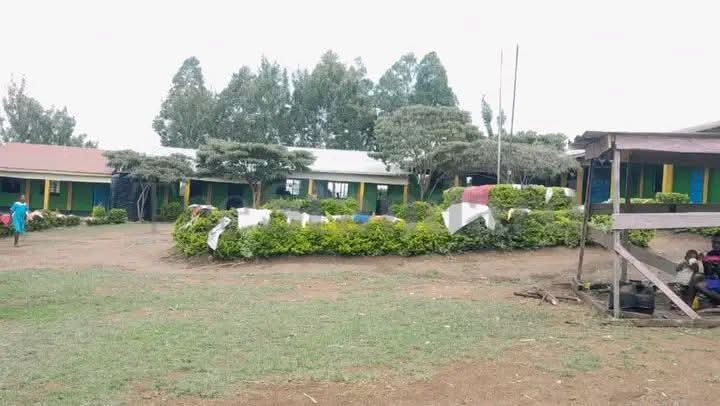By Victor Ochieng’
vochieng.90@gmail.com
In order to decide on the cut off points, some factors are put into consideration; availability of space in the university. Connected to this, is the demand for a particular university or college, which makes them raise the cut off points. There is the demand for the course. Some courses are so popular that institutions are forced to raise the cut off points. Medicine is a classic case. It is so competitive that sometimes even an ‘A’ does not guarantee a successful application. There is also the affirmative action, where the government is determined to ensure that at least one third of the students they sponsor through HELB in universities and colleges are women. Therefore, the cut off points may be lowered for female students just to meet this objective. The government also lowers the cut off points for admission for those living with disabilities, and those from marginalised communities so that they get a fair share to matriculate into universities and colleges.
- Cut Off Points
In the Career Manual, Godiah Rocky Imbukuleh and Benjamin Nzioka postulate that the cut off points for most courses per university are based on the Principle of Demand and Supply. If more students apply to join a given university more than the capacity the university can admit for that course, then they raise their cut off points to only pick those students with higher grades. That is why universities in Nairobi have relatively higher cut off points for most of their courses compared to other universities in similar courses. For most students have the propensity to study in Nairobi because of exposure and other advantages associated with city life.
Each subject has a maximum of 12 points. Going by the four subjects required, the maximum cut off point is therefore 48 points. In the Discover Your Career Workbook published by Story Moja, Margaret Waithaka and Victoria Wainaina posit that for a student to earn a place at the university or college for a specific course, KUCCPS looks at three things: One, the mean grade that ushers the student to the institution of higher learning. Secondly, cluster subjects that give the student the cluster points, which opens doors to university or college of choice. And three, cut off points for different universities and courses.
- Cluster Points
KUCCPS convenes a meeting upon the release of KCSE results to determine the overall cut off point that students need in order to qualify for university and college placements.
Moreover, each university and TVET institution sets the cut off points one has to achieve in the cluster of four (4) subjects that are considered to be the most relevant for the course.
Besides achieving the required mean grade for admission into university, it is imperative for a candidate to be aware of the specific subjects required for the cluster points. For an artistically talented student aspiring to pursue a career in the sphere of music, the clusters required will be as follows: Music, English or Kiswahili, Mathematics, and any subject in Group 2, 3, 4 or 5.
But what happens to a student who has failed flat to meet the cut off points required at the university or college of reference? It is not right to give up. It is advisable to have a plan A, B or C in career planning. Then, it is also important to search for related courses, which should of course be in tandem with one’s values, interests, skills, aptitude and talents. Search for other institutions offering the course because different institutions have different cut off points. You can also apply for a diploma course at a TVET instititution that require low cut off point. Again, what matters is that the course you choose to study should suit your career plans. If you have the overall cut off points indicated as required but missed the course you wanted because it was so popular or crowded, you will have the opportunity to apply again to another institution under what is known as the Second Stage Revision.
- Cluster Points for a Given Course
For KNEC to calculate the candidate’s mean grade, they consider the following points: A=12, A=11, B+= 10, B=9, B-=8, C+= 7, C=6, C-=5, D+=4, D=3, D-=2 and E=1. Mean grade is equal to total points divided by seven (7). Every candidate sits for a minimum of 7 subjects in KCSE and even if s/he sits for a maximum of 9 subjects; they will only pick the two languages (Kiswahili and English), two Sciences (Mathematics/Physics), a humanity like (CRE/History) and a technical like Computer/Agriculture/French.
So, the total points a student can scoop after scoring A’s in all gradable subjects are 84. Then, to arrive at cluster or the subjects that most relevant to your course, they pick only 4. For instance, if it is a Bachelor of Science course, they will pick two relevant sciences – Math/Physics and either English or Kiswahili. Albeit, English is preponderant. If it is an art-based course, they will pick a language, a humanity, a technical and Math or any Science.
So, if for example, you score the following grades, and you want to apply for Medicine at the University of Nairobi, this is how you will go about it: English B+, Kiswahili A, Math A – , Chemistry A –, Biology B+, Physics A, Business Studies A and CRE A. For this candidate to apply for a course like Medicine, s/he needs a cluster of Kiswahili, Physics, Biology and Chemistry. English will not be used in this case because the student performed better in Kiswahili. Similarly, Mathematics will not be used because s/he performed better in Physics.
The writer rolls out career talks and training services. He guides Form Twos on Subject-Selection, Form Fours on Selection of College Courses, and rolls out Skills Enhancement-cum-Development Programme for College Students focusing on Softs Skills, Transferable Skills, 21st Century Skills and Employability Skills.






